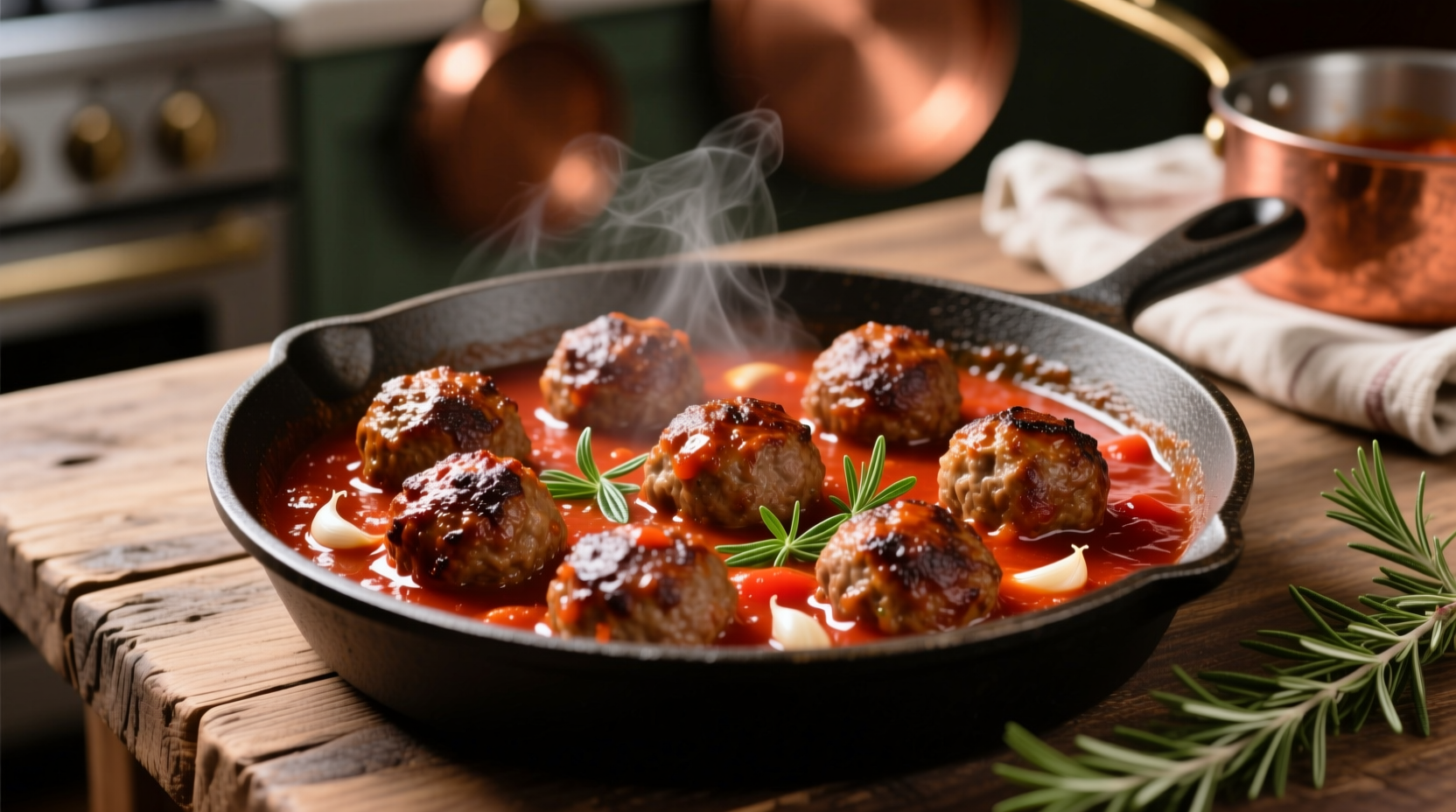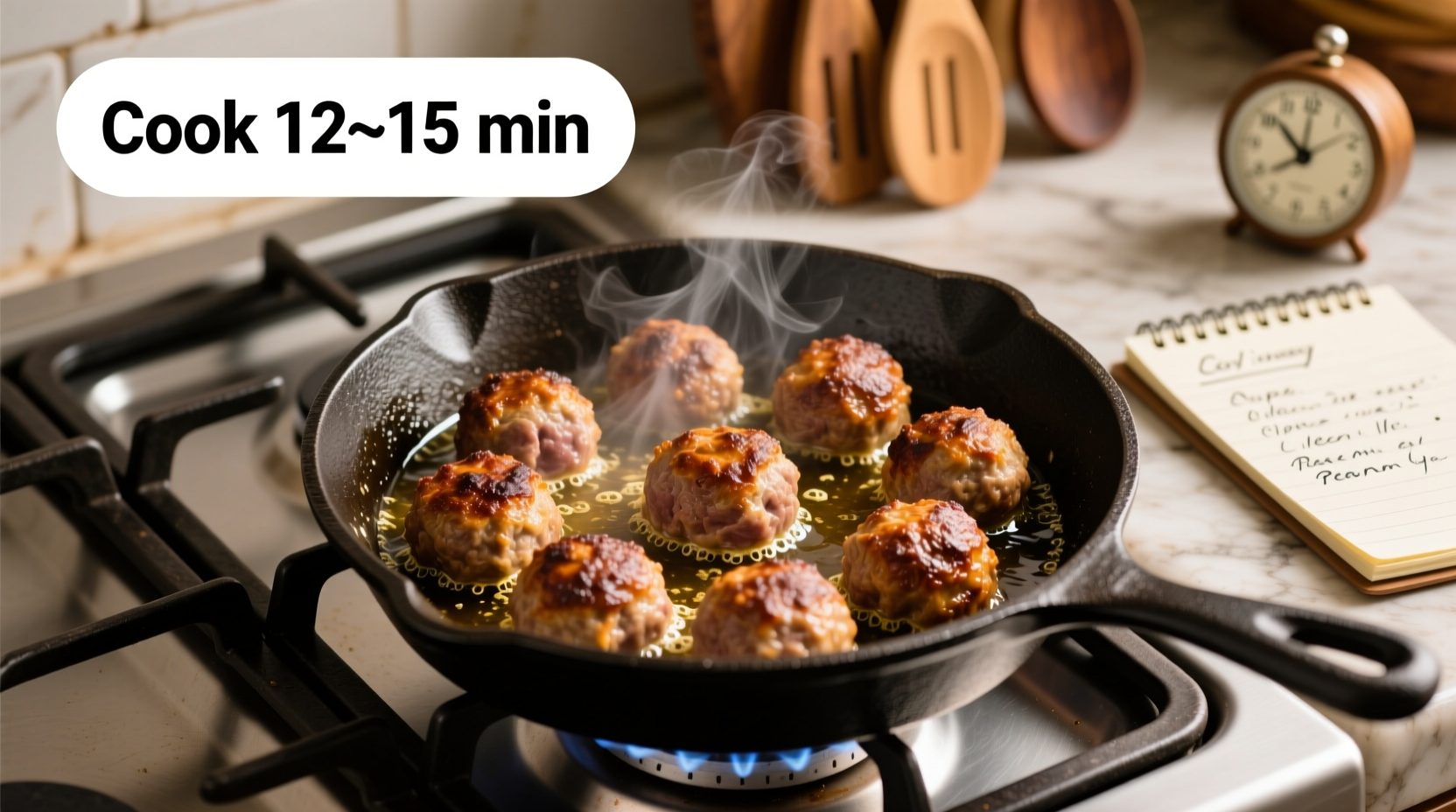Perfect Stovetop Meatballs: Timing, Technique, and Troubleshooting
Getting meatball cooking time right transforms your dish from risky to restaurant-quality. Undercooked meatballs pose food safety hazards, while overcooked versions become dry and crumbly. This guide delivers precise timing based on meatball size, composition, and cooking method - plus visual indicators so you'll never need a thermometer.
Why Cooking Time Varies: The Critical Factors
Your meatball's final texture and safety depend on four key variables that determine exact stovetop cooking duration:
- Size matters most: Diameter directly impacts cooking time. Smaller meatballs cook faster but dry out easier.
- Meat composition: Beef and pork reach safe temperatures faster than lean turkey or chicken.
- Heat level control: Medium heat prevents burning while ensuring thorough cooking.
- Sauce immersion: Simmering in liquid adds moisture and reduces required cooking time.
| Meatball Diameter | Total Cooking Time | Internal Temperature |
|---|---|---|
| 1 inch (2.5 cm) | 6-8 minutes | 155°F (68°C) |
| 1.5 inches (3.8 cm) | 10-15 minutes | 160°F (71°C) |
| 2 inches (5 cm) | 15-20 minutes | 160°F (71°C) |
This timing data aligns with USDA Food Safety and Inspection Service guidelines, which confirm ground meats must reach 160°F (71°C) to eliminate harmful bacteria like E. coli and Salmonella.
Step-by-Step Stovetop Cooking Method
Preparation Phase: 5 Minutes
Chill formed meatballs for 15-30 minutes before cooking. This critical step prevents disintegration during browning. Use a consistent size - a #20 ice cream scoop creates perfect 1.5-inch portions.
Browning Phase: 6-8 Minutes
Heat 2 tablespoons oil in a heavy skillet over medium heat. Cook meatballs in single layer without crowding:
- Rotate gently every 90 seconds using tongs
- Achieve even golden-brown crust on all sides
- Remove when 70% browned (they'll finish cooking in sauce)
Simmering Phase: 5-8 Minutes
Transfer browned meatballs to simmering sauce. Cover and maintain gentle bubble:
- Beef/pork: 5-7 minutes
- Turkey/chicken: 7-8 minutes
- Vegetarian: 8-10 minutes

Visual Doneness Indicators (No Thermometer Needed)
Professional chefs rely on these visual cues when cooking meatballs on stove:
- Juice color: Clear juices when pierced, not pink
- Texture: Firm but springy when pressed
- Cut test: Uniform gray-brown interior with no pink streaks
- Float test: Meatballs rise slightly when fully cooked
Troubleshooting Common Problems
Meatballs Falling Apart
Solution: Chill mixture 30 minutes before shaping. Use 1 egg per pound of meat plus 1/4 cup breadcrumbs. Avoid overmixing - handle meat gently.
Uneven Cooking
Solution: Maintain consistent 325°F (163°C) oil temperature. Rotate meatballs every 90 seconds. Use uniform sizing.
Dry or Crumbly Texture
Solution: Add 2 tablespoons olive oil or grated Parmesan to mixture. Don't overcook - remove at 155°F (68°C) as carryover cooking will raise temperature.
Time-Saving Techniques for Busy Cooks
- Batch cooking: Prepare and freeze uncooked meatballs for quick weeknight meals
- Sauce integration: Simmer meatballs directly in sauce for hands-off cooking
- Size adjustment: Make smaller 1-inch meatballs for faster 6-8 minute cooking
- Resting time: Let cooked meatballs sit 5 minutes in sauce for juicier results
When Stovetop Isn't Ideal: Context Boundaries
While stovetop cooking delivers excellent results for most meatballs, consider these limitations:
- Large batches: Oven baking works better for more than 20 meatballs
- Delicate mixtures: Fish or very lean turkey meatballs benefit from poaching
- Crisp exterior: For extra-crispy results, finish under broiler after stovetop cooking











 浙公网安备
33010002000092号
浙公网安备
33010002000092号 浙B2-20120091-4
浙B2-20120091-4